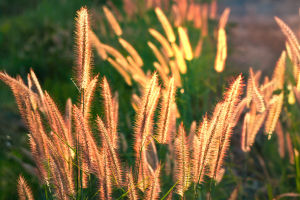Hey Lykkers! Vines and climbers are some of the most dynamic and playful plants in the green world. Instead of standing upright on their own, they reach for support—twisting, wrapping, or sticking their way skyward with style.
Whether you're after a lush green privacy screen, a splash of flowers over an arbor, or something to soften a blank wall, vines can be your creative secret.
In this guide, we'll untangle the beauty and variety of climbing plants. From how they move to the many ways you can use them in your space, you’ll come away ready to let these natural acrobats show off their climbing talents in your garden or balcony.
Part 1: How Vines Climb
Let's start with how these plants work their climbing magic. You'll notice different types of movement depending on the species, and knowing this will help you pick the right one for your setup.
Twining Stems: Spiraling into Place
Some climbers use their stems to spiral around nearby structures—think morning glories or wisteria. These vines wrap themselves tightly around poles, trellises, and even neighboring plants. As you guide them, they'll grab on and keep going, forming spirals and curls as they grow.
To encourage this kind of vine, set up vertical or diagonal supports like wooden stakes or metal frames. You'll find that once it gets started, it barely needs your help—just a little nudge here and there to keep it on course.
Tendrils: Nature's Tiny Grippers
Then there are vines like peas or passionflowers that grow special thread-like parts called tendrils. These act like little arms reaching out, curling around anything they touch. They don't need much to latch onto—a thin wire, a net, or even string will do.
With tendril climbers, you want to offer something narrow for the tendrils to wrap around. You'll love watching them stretch and coil their way along with determination and charm.
Clinging Roots and Pads: Wall Huggers
If you've seen ivy covering an old brick wall, you've met the clingers. These plants grow tiny rootlets or sticky pads that grip directly onto surfaces like stone, wood, or concrete. They don't need a support system—they become the wallpaper themselves.
Use clingers when you want a plant to blanket a vertical surface, but remember to give the wall a good check first. These plants are strong and might pull on softer materials. With the right spot, though, they're breathtakingly lush and dramatic.
Part 2: Bringing Vines into Your Space
Now that you know how they climb, let's explore how to use vines creatively. You've got more options than you might think!
Vertical Gardens and Privacy Screens
Want more greenery without taking up much ground space? Vines are perfect. Train them up a trellis beside your balcony, or use them on a fence to add softness and life. You can even use them to divide areas of your yard into little green "rooms."
To do this, just guide your chosen vine along wires or mesh. It's fun to shape and watch them grow, and in a few weeks, you'll feel like you've stepped into your own leafy hideaway.
Colorful Arches and Accents
Climbing plants are also amazing for adding color to otherwise dull areas. Try training flowering vines like clematis or climbing roses over an archway or pergola. You'll walk beneath a tunnel of blooms in no time.
You can also use them to dress up mailboxes, porch railings, or even old garden tools stuck in the ground. If it can stand up, a vine can climb it! Pick a climber that blooms in your favorite season and let the show begin.
Lykkers, climbing plants, bring life, color, and movement to any space. Whether you love the neat grip of tendrils, the elegance of spiraling stems, or the bold coverage of wall-clingers, there's a vine out there for you.
By learning how they climb and finding creative spots to use them, you're not just growing plants—you're building living architecture. So go ahead, invite a little vertical magic into your garden, and let the vines rise to the occasion.


